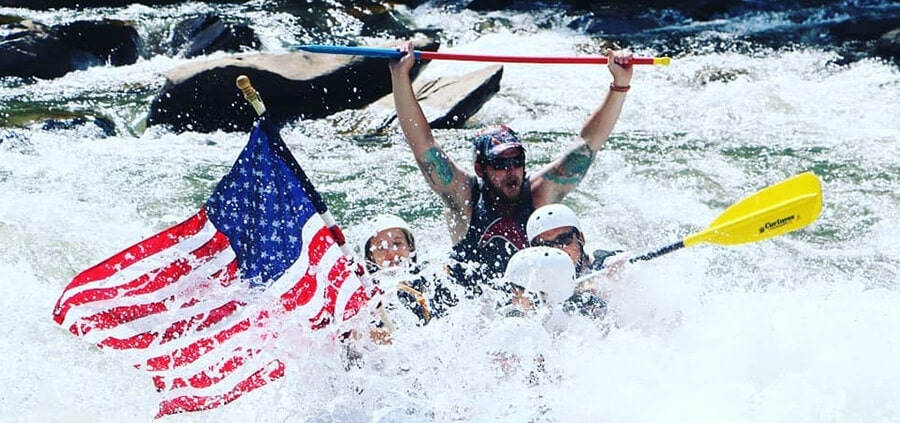White Water Rafting Gear: What You Need to Know
Ready for an adrenaline-pumping Ocoee whitewater rafting adventure? Before you book your Ocoee trip, it’s crucial to gear up properly for the full Ocoee River experience. Whether you’re launching from a Chattanooga whitewater rafting outfitter or an Ocoee river outpost, having the right equipment can make or break your journey. Keep reading to discover the essential gear you’ll need for a safe and thrilling white water expedition.
Essential Personal Protective Equipment for Rafters

When planning your white water rafting adventure on the ocoee river outpost, knowing what to bring rafting is crucial for your safety and enjoyment. Two key pieces of personal protective equipment stand out as absolute must-haves for every rafter: a sturdy helmet and a high-buoyancy life jacket. These essential items play vital roles in keeping you safe as you navigate the thrilling rapids of the ocoee whitewater rafting. Let’s dive into why these pieces of gear are non-negotiable and how they contribute to your full Ocoee River experience on the water.
The Role of a Sturdy Helmet in Safeguarding Your Head
Your helmet acts as your first line of defense against potential head injuries during your Chattanooga whitewater rafting adventure. It shields you from rocks, paddles, and other obstacles you might encounter while navigating the rapids. By wearing a sturdy helmet, you’ll protect your head and face, allowing you to fully immerse yourself in the thrilling full Ocoee River experience without worrying about unexpected impacts.
Why a High-Buoyancy Life Jacket Is Non-Negotiable on the Rapids
Your life jacket is your most crucial piece of safety equipment on the water. It keeps you afloat if you fall out of the raft, providing essential buoyancy in turbulent rapids. A high-quality, properly fitted life jacket also helps protect your chest from impacts and allows you to breathe more easily in rough water. book your Ocoee trip
Selecting the Right Rafting Clothing for Comfort and Safety

Now that you’ve got your essential protective gear sorted, let’s talk about what to wear on your rafting adventure. The right clothing can make a huge difference in your comfort and safety on the river. You’ll want to choose materials that keep you warm even when wet, and footwear that gives you a good grip on slippery surfaces. These choices will help you stay comfortable and secure as you navigate the exciting rapids of the Ocoee River.
Choosing Materials That Keep You Warm Even When Wet
When choosing rafting attire, opt for synthetic materials like polyester or nylon that wick moisture away from your skin and retain warmth even when wet. These fabrics dry quickly, keeping you comfortable throughout your adventure. Avoid cotton, as it absorbs water and can leave you feeling cold and heavy:
- Synthetic base layer (e.g., polyester or nylon shirt)
- Quick-drying shorts or swim trunks
- Fleece or wool mid-layer for colder days
- Waterproof or water-resistant outer layer
Footwear That Provides Grip and Protection on Slippery Surfaces
Choose footwear that offers both grip and protection for your rafting adventure. Water shoes or sport sandals with sturdy soles and quick-drying materials are ideal choices. These options will help you maintain your footing on slippery surfaces and protect your feet from rocks and other hazards in and around the water.
Must-Have Accessories for an Enhanced Rafting Experience

Adding a few key accessories to your rafting gear can take your experience from good to great. While not as critical as helmets and life jackets, these items can significantly boost your comfort and enjoyment on the river. Let’s explore two accessories that can make a big difference: waterproof gloves and eye protection. These extras help you maintain control and visibility, letting you focus on the thrill of conquering the rapids.
Waterproof Gloves to Maintain Grip and Warmth
Waterproof gloves are a game-changer for your rafting adventure. They help you maintain a firm grip on your paddle, even in wet conditions, while keeping your hands warm and protected from the chilly river water. Look for gloves made of neoprene or other quick-drying materials with textured palms for extra grip:
- Neoprene gloves for insulation
- Textured palms for better paddle control
- Snug fit to prevent water entry
- Adjustable wrist straps for security
Eye Protection Options to Combat Glare and Splashback
Don’t forget to shield your eyes during your rafting adventure. Sunglasses or sports goggles with polarized lenses will protect your eyes from glare off the water and shield them from splashback. Secure them with a strap to prevent loss in the rapids, and consider a floating pair for added peace of mind.
The Best Rafts for White Water Adventures

Choosing the right raft is crucial for your white water adventure. Different river classes demand specific raft types, and understanding these distinctions can make or break your experience. You’ll want to consider factors like stability, maneuverability, and capacity when selecting your vessel. Additionally, certain features can greatly enhance a raft’s durability and responsiveness, allowing you to tackle challenging rapids with confidence. Let’s dive into the world of white water rafts and explore what makes them tick.
Understanding Raft Types Suitable for Different River Classes
You’ll find different raft types suited for various river classes. For mild, Class I-II rivers, stable and spacious self-bailing rafts work well. As you tackle more challenging Class III-IV rapids, you’ll want a more maneuverable raft with thwarts for added rigidity and responsiveness. For extreme Class V whitewater, specialized high-performance rafts with extra reinforcement and precise handling are your best bet.
Features That Contribute to a Durable and Responsive Raft
You’ll find several key features that make rafts durable and responsive on white water. Look for reinforced seams, abrasion-resistant materials, and multiple air chambers for safety. A well-designed self-bailing system keeps water out, while strategically placed thwarts and foot cups give you better control. Responsive rafts also have a slight rocker (curve) in the hull, allowing for quicker turns and easier maneuvering through rapids.
Planning Your Pack With Safety Gear Essentials

You’re almost ready to hit the rapids, but don’t forget to pack some crucial safety gear. Beyond your helmet and life jacket, a well-stocked first aid kit is essential for any white water adventure. Let’s explore what should go into a kit specifically designed for rafting trips, ensuring you’re prepared for any minor mishaps on the river. With the right supplies at hand, you’ll be able to tackle unexpected situations and keep the fun flowing.
A Comprehensive Guide to First Aid Kits Specifically Designed for Rapids
You’ll want to pack a first aid kit tailored for white water adventures. Include waterproof bandages, antiseptic wipes, pain relievers, and blister treatments. Don’t forget items like a space blanket, emergency whistle, and a small flashlight:
- Waterproof bandages and gauze
- Antiseptic wipes and antibiotic ointment
- Pain relievers (ibuprofen, acetaminophen)
- Blister treatments and moleskin
- Space blanket for emergencies
- Whistle for signaling
- Small waterproof flashlight
- Tweezers and scissors
- Any personal medications you need
Conclusion
Proper white water rafting gear ensures your safety and enhances your experience on the river. Essential items like helmets and life jackets protect you from potential hazards, while appropriate clothing and footwear keep you comfortable in wet conditions. Accessories such as waterproof gloves and eye protection improve your control and visibility during the adventure. Choosing the right raft and packing a well-stocked first aid kit complete your preparation, allowing you to fully enjoy the thrills of conquering rapids with confidence.




Leave a Reply
Want to join the discussion?Feel free to contribute!